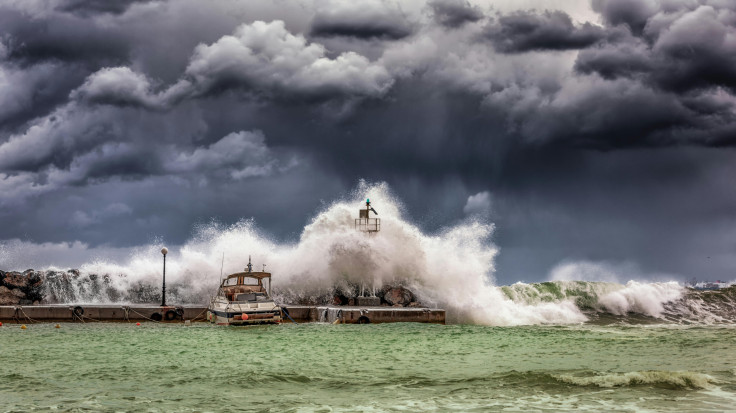NOAA Tsunami Tech Just Saved Hawaii — But Experts Say the Next One Could Be Worse
The Hilina Slump poses a serious risk of a sudden, localised mega-tsunami

A powerful 8.8-magnitude undersea earthquake struck off Russia's Kamchatka Peninsula on 29 July 2025, triggering a widespread tsunami warning that extended to Hawaii, Alaska, and the U.S. West Coast.
The event prompted immediate evacuations in parts of Honolulu as the National Oceanic and Atmospheric Administration (NOAA) activated its tsunami warning systems. Although the impact on U.S. shores remained minimal, experts have warned that Hawaii could face a far more dangerous scenario in the future from a locally generated tsunami.
NOAA Tsunami Warning System Prevents Potential Disaster
As reported by The Guardian, NOAA's Pacific Tsunami Warning Center (PTWC) and National Tsunami Warning Center (NTWC) issued alerts within minutes of detecting the quake, with real-time data from the Deep-ocean Assessment and Reporting of Tsunamis (DART) buoy network. The automated system identified ocean pressure anomalies and wave propagation, allowing for timely warnings and public alerts across affected regions.
In Hawaii, emergency management officials activated tsunami warning sirens across multiple islands following the alert. Authorities advised residents in low-lying coastal areas to move to higher ground or upper levels of buildings. In Honolulu, beaches and ports were temporarily closed as a precaution, and some public services were suspended for several hours.
Despite the swift response, wave heights recorded in Hawaii remained under one metre, and no major damage was reported.
Local Geological Threats Could Leave Little Time to React
While the system performed effectively in this instance, scientists have highlighted the significant difference between distant-source and local-source tsunamis. The Kamchatka quake provided several hours of lead time, but events originating near the Hawaiian Islands could offer only minutes of warning.
One of the most concerning risks is the Hilina Slump, an unstable section of the Kīlauea volcano's southern flank. If triggered by seismic activity or a volcanic event, this landmass could rapidly collapse into the Pacific Ocean, generating a localised mega-tsunami. In such a scenario, waves could reach coastal communities within 10 to 30 minutes, according to Research Gate.
Research Identifies Hawaii Among Top Mega-Tsunami Risk Zones
Scientists have identified Hawaii, along with Alaska and the U.S. Pacific Northwest, as among the regions most at risk for a future mega-tsunami, based on geological features such as active subduction zones, unstable volcanic flanks, and historical tsunami activity.
Historical records confirm that tsunamis have previously impacted the Hawaiian Islands, including a major event in 1946 that resulted in 159 fatalities. Given Hawaii's exposure to seismic activity, volcanic flank instability, and surrounding subduction zones, scientists emphasise the need for continued monitoring, early warning improvements, and community preparedness.
System Strengths and Remaining Limitations
NOAA's current detection infrastructure, including the DART buoys and the SIFT (Short-term Inundation Forecasting for Tsunamis) model, provides robust early warning for distant events. However, the speed and limited warning time of local tsunamis remain a challenge.
While technological improvements have reduced alert delays, the threat from sudden, near-shore events underscores the importance of public awareness. False alarms in the past have occasionally caused public complacency, but emergency officials continue to emphasise the need for rapid response even without an official alert, particularly if strong ground shaking is felt.
Ongoing Measures to Strengthen Preparedness
NOAA and state agencies in Hawaii are working to expand tsunami readiness through improved hazard mapping, enhanced forecasting models, and increased community education. Siren testing, school evacuation drills, and multilingual public messaging have been introduced to ensure swift action in future emergencies.
Authorities are also reviewing the placement and sensitivity of DART buoys to improve local detection capabilities. Coordination between NOAA, the Hawaii Emergency Management Agency, and local municipalities remains central to ensuring that residents have the tools and knowledge needed to act quickly during a tsunami threat.
© Copyright IBTimes 2025. All rights reserved.





















